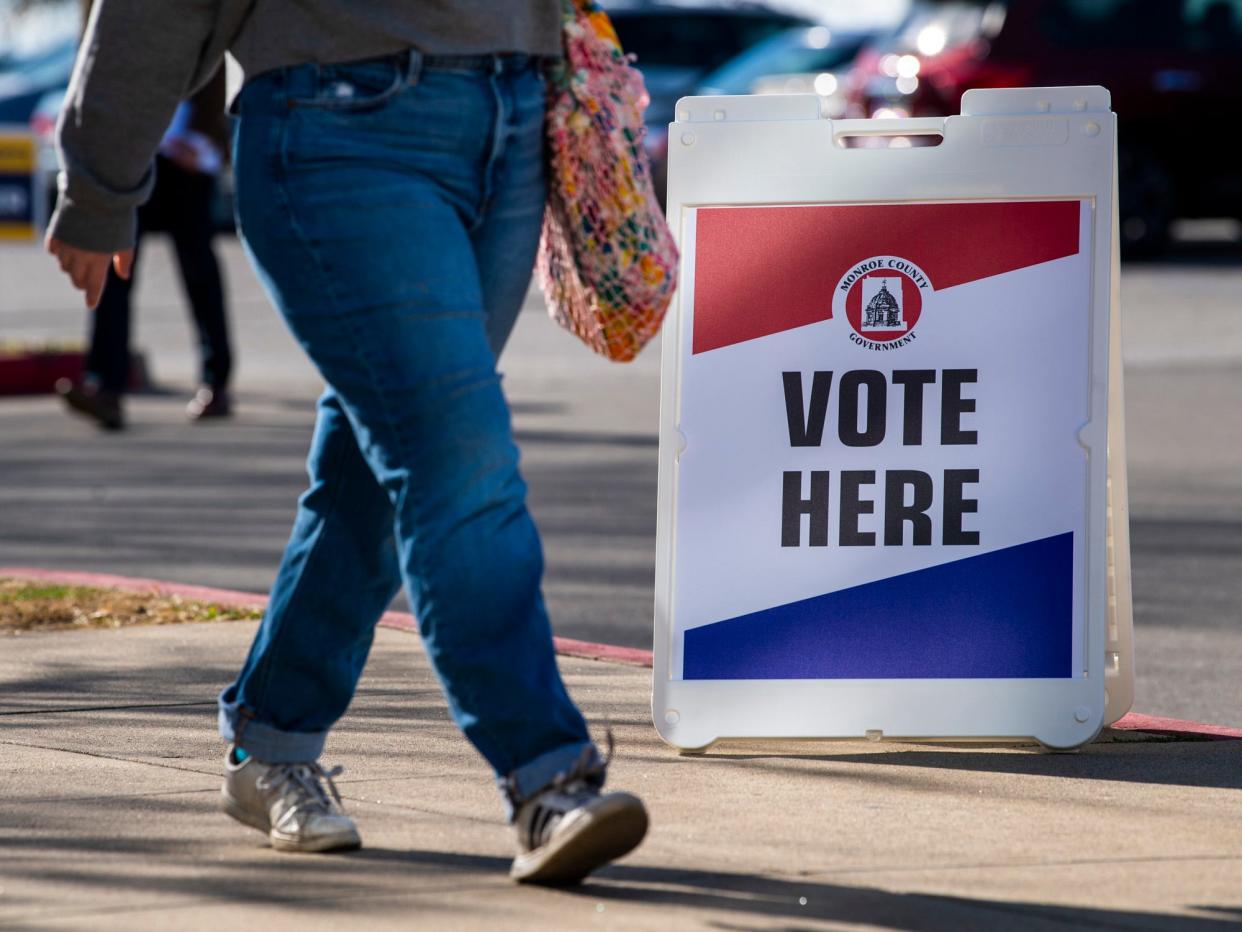Election preview: City Council District 2 candidates talk about housing, climate change

The primary election for City Council District 2 will pit incumbent Democrat Sue Sgambelluri against fellow Democrat Kate Rosenbarger, the current council member for District 1. Because of redistricting, Rosenbarger cannot defend her seat in District 1. No Republican has filed for the seat.
Early voting begins April 4. Primary election day is May 2. A map of the new council districts: tinyurl.com/5n8szcm7.
Q: Which problem facing the city is the first you would want to see addressed if you get to serve on the council?
Rosenbarger: I will continue to work with my colleagues to develop the City of Bloomington into a model mid-western city for climate-change resilience. The effects of a destabilizing climate are the most pressing issues that this community will encounter; extreme weather events (increased flooding, high temperature days) are already compromising the health and economic development of our community.

More:Flood experts: Lack of data, foresight, political courage leave many cities unprepared
To mitigate the impacts of climate change is to address how all of the systems of modern life – our buildings, housing, transportation, energy, food, and more – are powered and structured. If we are to avert the worst of the climate crisis, we must rebuild these systems in ways that promote equity and justice. By implementing our city’s Climate Action Plan, we can take big steps in this direction.
I am running for re-election to City Council because I believe there are opportunities to support climate resilience for our community in ways that also support racial equity and restore justice to communities disproportionately affected by chronic disinvestment in our infrastructure.
Sgambelluri: Housing – including the need for more workforce/affordable housing and the need for resources for those experiencing housing insecurity and homelessness.

More:Building a home? 'The day of the $175K starter home is gone' in Monroe County
Q: County officials are reluctant to allow dense housing developments on the city’s fringes. The city council has allowed small steps for densification in core neighborhoods, but builders have not responded by building many duplexes. Instead most new units being built are expensive high-rise apartments. What legislation would you propose that would increase the availability of affordable housing units in Bloomington? How much would that cost? How would you pay for it?
More:Another apartment building planned near IU campus. Here are the details.
Rosenbarger: Housing is an essential need that provides the foundation for people to build their lives, find work, raise the next generation, and age in place. Local governments have a critical role in protecting tenants, ensuring their policies and programs preserve and develop housing so that it is accessible for all residents, is resilient and responsive to our changing environment, and contributes to the well-being of our communities and residents throughout its design, construction, and maintenance.
Long-term solutions that are at the discretion of the City Council are low and no-cost, but they do require bold action. Bloomington is suffering from a severe housing shortage - we are at a 98% occupancy rate, which means people hoping to buy or rent in Bloomington are unable to find housing, whether they are looking for a single family home or an apartment. We must update the City’s Unified Development Ordinance to ensure we are developing housing that is accessible for all residents, is resilient and responsive to our changing environment, and contributes to the well-being of our communities and residents throughout its design, construction, and maintenance.
Sgambelluri: The City cannot on its own resolve our housing issues. Rather, it will take a multi-pronged approach and partnerships to see progress.
Overall, we need to strengthen incentives for developers to include affordable units in residential projects. In addition, as suggested in the 2020 Housing Study, we should explore and pursue partnerships with the local private sector (particularly major employers), the lending community, IU, private foundations, and others to craft a more comprehensive response to housing challenges.
And again, we need to revisit the UDO and evaluate the degree to which it has met a core goal ... to make development more streamlined and predictable. More specifically, I support the buildout of the Hopewell Neighborhood to increase housing stock and to add more affordable units in the desirable downtown. Similarly the Trinitas Development on West Arlington includes parcels and infrastructure to be transferred to the City – another opportunity to develop more workforce housing.
As a member of the Redevelopment Commission, I took part in the purchase of land parcels that have since been developed as affordable housing including B-Line Heights and the Retreat at Switchyard. I believe that strategy has served the city well and should continue when appropriate.
Q: Both police and firefighters have said they are underpaid and that low salaries are prompting experienced colleagues to leave for other departments that pay more. What legislation would you propose to increase retention in police and fire departments? How much would that cost? How would you pay for it?
More:Bloomington firefighters: Low wages, staffing shortages imperil public safety
Rosenbarger: I have no doubt that police and firefighters feel undervalued and this prompts staff in those departments to find employment in other communities. What often goes unsaid is this dynamic is very common at the City of Bloomington, it’s systemic, even. The reality is the City of Bloomington should prioritize supporting longevity for the dedicated public servants that support all 18 departments - from the people who drive our buses and clean our parks, to the people who fix water main breaks and respond to 911 calls.
We need to promote policies that increase staff satisfaction in the workplace, from competitive pay and benefits to a culture that welcomes and supports everyone. Our Human Resources Department is currently tackling some of these tough issues, and I will continue to support working toward a city workforce that makes it clear we value our employees.
Sgambelluri: Public Safety is one of the most critical functions of local government and it is foundational. Our ability to promote social and economic vitality depends on our quality of life and that in turn depends on the degree of safety our residents feel, both through the work of sworn officers and non-sworn officers like police social workers and community resource specialists.
Recognizing the importance of ongoing investments in police and fire, I supported an increase in the local income tax that provided significant salary enhancements for sworn officers ($1.5 million annually), and non-sworn officers ($232,500 annually) as well as investments in police and fire headquarters ($930,000 annually), new/upgraded fire stations ($1.209 million annually), and Fire Public Safety Programs ($232,500 annually). Those investments, together with newer incentives like housing assistance and take home cars have the potential to strengthen our recruitment and retention efforts.
In addition, as we plan, design and build out the recently purchased “Showers West” for our new Police Station and Public Safety Offices, it is critical that we actively involve police and firefighters – both from leadership and the rank-and-file – in that process.
This article originally appeared on The Herald-Times: City Council District 2 candidates discuss housing, climate change

